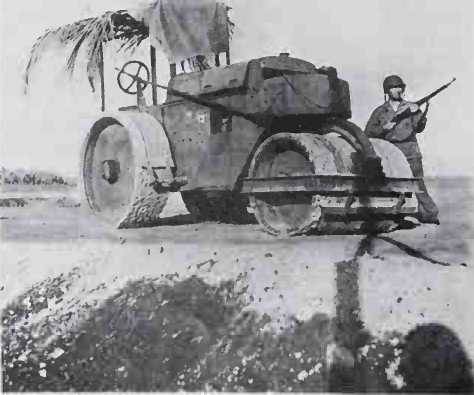Another much needed respite had been gained by the Japanese failure to appreciate the Marines’ strength. The 1st Marine Division had received no reinforcements or ammunition since the landing in August, the troops were eating only two meals a day and part of those were Japanese rations, and tropical diseases, particularly malaria, were beginning to fell large numbers of men. The "Cactus Air Force’’, so named by its pilots after the island’s codename, was now

A battered collection of Army P-40’s, Navy fighters and dive-bombers from damaged carriers, and Marine Corps aircraft. Plane availability was often less than 50 and all types were woefully short of fuel andparts. The forward echelon of the 1st Marine Aircraft Wing under Brigadier-General Roy S. Geiger controlled the motley air force, but its attrition rate was heavy from its constant clashes with the Japanese and operational accidents caused by the primitive condition of the runways, and Geiger was hard put to it to provide replacement aircraft.
For both the ground and air elements of Vandegrift’s force, then, September 18 was a day for celebration. The 7th Marines arrived from Samoa to rejoin the division; with its reinforcing artillery battalion of 75-mm pack howitzers, the regiment stood at 4,262 very welcome men. Moreover, the ships that Admiral Turner sent forward with the regiment also carried over 3,000 drums of aviation spirit, 147 vehicles, engineering equipment, 1,000 tons of rations, and about ten units of fire for all weapons. Things were looking less bleak for Vandegrift’s men.
The newly arrived regiment soon got a chance to test its mettle in combat. The Japanese were building up their forces west of the Marine perimeter and on the 23rd Vandegrift sent the 1st Battalion, 7th Marines inland toward Mt. Austen, which overlooks the Lunga plain, with the mission of crossing the jungle-covered foothills and turning north to patrol to the mouth of the Matanikau River. It was a hotly contested advance and the 2nd Battalion, 5th Marines came up to reinforce and help evacuate casualties. The Raider battalion moved along the coast to probe across the Matanikau. The Japanese made a stand at the river mouth and the action escalated. Colonel Edson, who now commanded the combined force, decided on a landing behind the Japanese position and chose the 7th Marines battalion for the job. Using the landing craft that had been left at Guadalcanal by damaged and sunken transports, the Marines made a shore-to-shore movement and drove inland to a ridge about 500 yards from the beach. The Japanese closed in behind them and cut them off from their boats. The battalion’s radio was inoperative, but an SBD pilot overhead saw its predicament and repeatedly attacked the encroaching Japanese troops. Offshore, the destroyer Ballard used her 5-inch guns to blast a path to the
Beach and cover the landing craft. The battalion fought its way out of the trap, taking 24 dead and 23 wounded Marines with it. The coxswains of the landing craft made the evacuation despite a constant hail of enemy fire and considerable casualties.
This fight vvas just the first of a series of violent clashes, as Vandegrift sought to drive the Japanese away from the peri-‘ meter. Heavy artillery, 150-mm howitzers, had been landed near Kokumbona, the Japanese headquarters, and these I guns could now shell Henderson Field and a fighter strip which had been completed nearby. If the Cactus Air Force could be kept from flying, the Japanese I transports and bombardment ships could I have an unmolested run-in with reinforcements. As long as the mixed bag of American fighters and bombers could stay I aloft, Sealark Channel was virtually ( shut off to the Japanese during daylight hours.




 World History
World History









